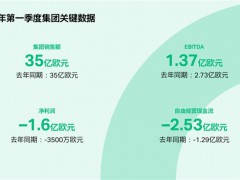???? 據2月25日Investing.com報道,當前,交易員們必須明白,美國的數據將受到上周嚴寒天氣對德克薩斯州石油生產的影響。
????接下來,交易員們應該要為迎接歐佩克+的消息做好準備,該組織正試圖在不驚動市場的情況下進行政策調整,以適應不斷上漲的油價。交易員必須考慮到,目前較高的油價會激勵生產商增加產量。
????一是美國的數據報告和德州冰凍天氣的影響。
????盡管德克薩斯州的嚴寒天氣危機已經結束,但交易員應該意識到,美國能源信息署(EIA)關于美國石油和汽油產量的報告看起來仍將不同尋常。由于德克薩斯州是美國最大的汽油消費地,但由于受到寒冷天氣的影響,居民出行活動減少,美國汽油消費數據也將出現反常的低水平情況。
????油價本周繼續上漲,截至周三午盤,布倫特原油和西德克薩斯中質油(WTI)價格分別創下每桶66美元和63美元的新高。部分原因是德州嚴寒氣候對美國石油生產的持續影響,但美國原油和汽油庫存也有顯著下降。
????在2020年7月達到峰值后,庫存減少了約1.95億桶,基本上抹去了2020年春夏期間積累的庫存。
????二是歐佩克+會議的召開。
????今年春夏季節,市場似乎越來越可能出現供應不足的情況。歐佩克+將于下周3月4日召開會議,將決定是否從4月1日起提高石油生產配額。
????目前,歐佩克+減產約700萬桶/天的原油。據路透社報道,歐佩克+產油國將在下周的會議上考慮將石油日產量增加50萬桶。然而,不能確保達成共識。俄羅斯很可能會推動更高的產量增長,而沙特阿拉伯可能會告知大家要保持謹慎。
????除了增加歐佩克+的整體產量,沙特阿拉伯還計劃將產量提高到2月和3月決定“額外”削減100萬桶石油日產量之前的水平。這個決定或將在4月份實行。
????有傳言稱,沙特阿拉伯可能會在4月份之前增產,但沙特最近向市場保證,他們仍承諾在4月份之前控制石油進入市場。
????盡管3月4日歐佩克+會議本應只設定4月的產量目標,但交易員們應該保持一種可能性,即歐佩克+將拿出一套方案,從4月到6月逐步增加產量。
????歐佩克+也可能考慮將伊朗納入其生產配額。據TankerTrackers.com報道,伊朗1月份出口了149萬桶/天的原油。
????三是頁巖油的生產前景。
????自2014年油價開始下跌以來,關于頁巖油生產商需要多少價格才能實現“收支平衡”和盈利的討論一直很多。早在2016年,大多數頁巖油項目都需要油價在每桶50美元至60美元之間才能具有商業可行性。到2020年,據說油一半的頁巖油井以每桶40美元的價格就獲得了盈利。
????現在WTI價格已經超過60美元/桶,頁巖油公司會增加產量嗎?根據EIA的數據,美國石油產量一直穩定在1100萬桶/天左右,這比去年1300萬桶/天的高點有所下降。盡管許多石油公司向市場保證,油價上漲不會吸引它們在今年增加產量,但有跡象表明,生產商將增加產量,特別是在不需要新鉆井的地方。
????先鋒自然資源公司首席執行官表示,他相信石油需求將會保持強勁,且美國頁巖油不再對歐佩克+構成威脅。該公司計劃在長期內每年增加5%的產量,參考其首席執行官的言論,在當前市場條件下,短期內產量會有更高的增長也就不足為奇了。
????如果頁巖油生產商提高產量,那么至少有100萬桶/天的增長空間,石油供應將明顯增加,這將給價格帶來下行壓力。值得一提的是,油價在每桶60美元以上時,所有的貿易商都需要密切關注產量情況。
????王佳晶 摘譯自Investing.com
????原文如下:
????3 Key Points Oil Traders Must Recognize about Current Energy Market Dynamics
????This week and next, traders must understand that U.S. numbers will be skewed by the winter freeze that hampered oil production in Texas last week.
????Next week, traders should be prepared for news from OPEC+, which is trying to adjust to rising prices without scaring the market.
????Beyond next week, traders must consider that the currently-higher oil prices serve as an incentive to producers to aim for additional output.
????1. U.S. Data and Lingering Texas Freeze Issues
????Even though the weather crisis in Texas is over, traders should be aware that the EIA reports on oil and gasoline production in the U.S. will still look unusual this week and next week. Gasoline consumption data in the U.S. will also appear abnormally low for the previous week since Texas is the largest source of gasoline consumption in the U.S. Texas residents were not travelling much last week due to the frigid weather conditions.
????Oil prices continued to rise this week with both Brent and WTI hitting new highs of $66 and $63 per barrel, respectively, as of midday Wednesday. Some of the increase is due to the lingering impact of the Texas freeze on U.S. oil production, but there has also been a significant drawdown of crude oil and gasoline inventories in the U.S.
????After hitting a peak in July 2020, inventories have decreased by about 195 million barrels, essentially erasing the buildup that occurred in the spring and summer of 2020.
????2. March 4, OPEC+ Meeting
????It increasingly looks as though the market could be undersupplied heading into the spring and summer months. OPEC+, which will be meeting next week on Mar. 4, will undoubtedly take this into consideration when deciding whether to raise oil production quotas starting Apr. 1.
????Right now, OPEC+ is withholding about 7 million bpd from the market. According Reuters, OPEC+ producers will consider increasing oil production by a total of 500,000 bpd at their meeting next week. However, consensus is not assured. It is likely that Russia will push for a higher production increase, and Saudi Arabia will probably urge caution.
????In addition to increasing overall OPEC+ production, Saudi Arabia plans to boost production to the level it was supposed to produce before it decided to cut an “extra” 1 million bpd of oil in February and March. This will likely happen in April.
????There were some rumors that Saudi Arabia might increase production sooner than April, but the Saudis recently reassured the market that they remain committed to keeping the oil off the market until April.
????Even though OPEC+’s Mar. 4 meeting is supposed to set production targets for April only, traders should keep open the possibility that OPEC+ will come up with a scheme to implement gradual increases in production from April through June as a compromise.
????OPEC+ may also consider the possibility of including Iran in its production quotas soon. Though the Biden administration has not relaxed the sanctions on Iranian oil, there are indications that it might do so shortly. According to TankerTrackers.com, Iran exported 1.49 million bpd of crude oil in January, but, the country has the capacity to increase that amount if sanctions are relaxed.
????3. Shale Production Prospects
????Since oil prices started dropping in 2014 there has been a great deal of discussion about what price shale producers need in order to “break even” and to make a profit. Back in 2016, most shale oil projects were said to need oil prices in the $50 to mid-$60 per barrel range to be commercially viable. In 2020, half of all shale oil wells were said to be profitable at $40 per barrel.
????Now that WTI is above $60 per barrel, will the companies producing in shale oil regions increase production? According to the EIA, oil production in the U.S. has been holding steady at around 11 million bpd. This is down from the 13 million bpd high attained last year. Even though many oil companies assured the market that rising oil prices would not tempt them to raise production this year, there are hints that producers will increase production, especially where new drilling isn’t required.
????The CEO of Pioneer Natural Resources (NYSE:PXD), commented this week that he is confident that demand for oil will be strong enough that:“U.S. shale is no longer going to be a threat to OPEC and OPEC+.”
????Pioneer plans to increase its production by 5% a year in the long term, but given the CEO’s comment, it would not be surprising to see higher production growth in the short term given market conditions.
????If shale producers raise production—and there is likely room for at least a 1 million bpd increase—supply will obviously increase. This would put downward pressure on prices. At $60+ per barrel prices, all traders need to keep an eye on production numbers.







